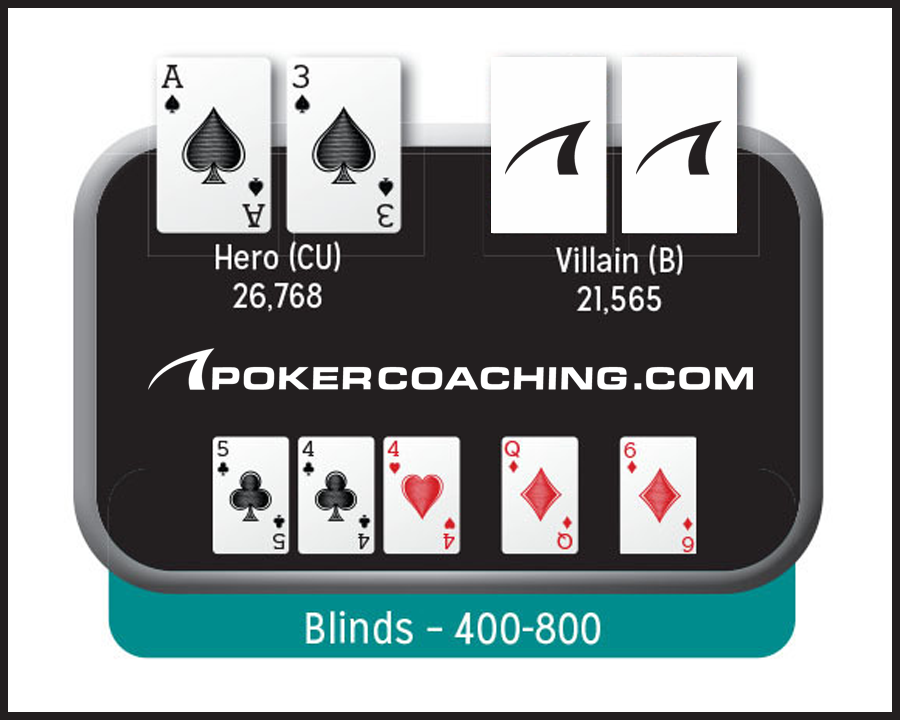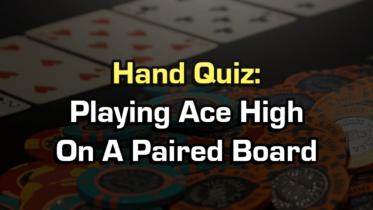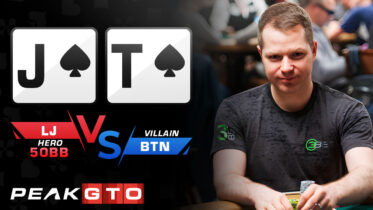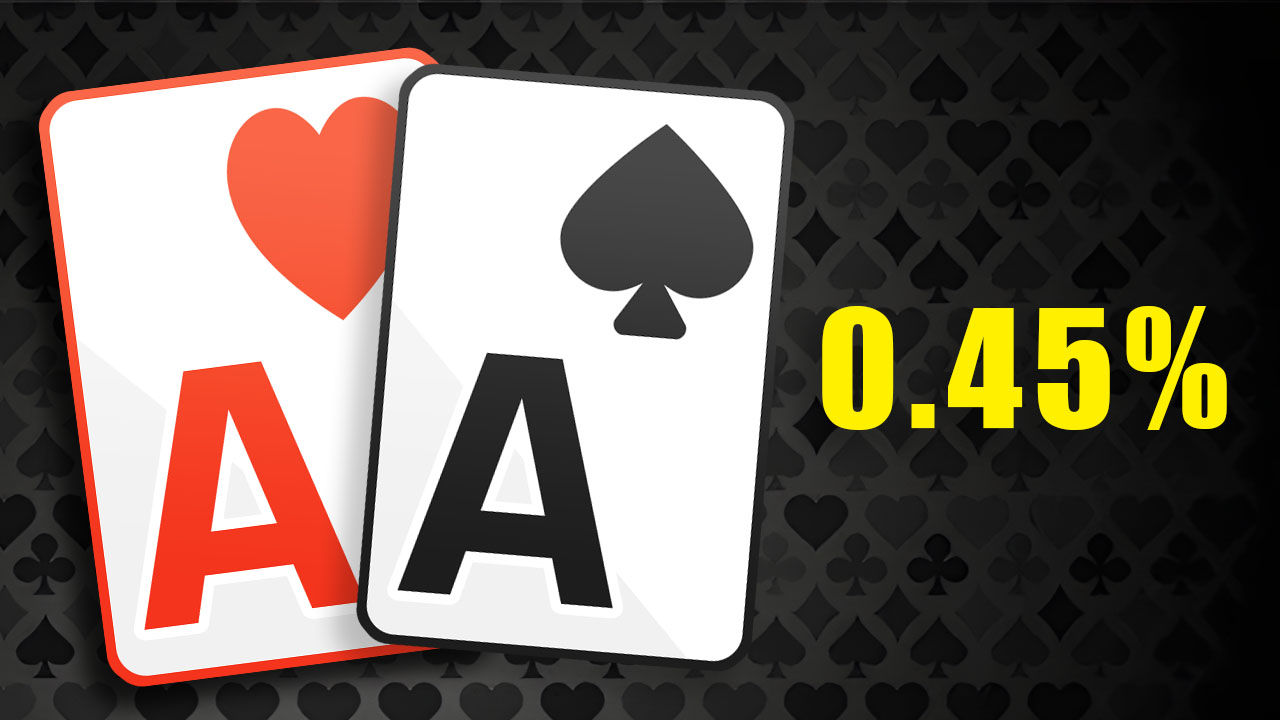Sometimes an ace is just enough to give you a better hand. Especially on paired boards, ace-high can be a valuable hand to exploit opponents. With every ace you hold, that is one less ace in your opponent’s range. Take what your opponent gives you and adjust accordingly.
Scenario: You are seven-handed in a $200 buy-in online tournament. You have 26,768 chips with the blinds at 400-800 when it folds to you in the cutoff holding A♠-3♠.
Playing Preflop With Ace-Three Suited

Raising All Of Your Playable Range
A♠-3♠ is a perfectly reasonable hand to raise from all positions. If you somehow know one of your opponents will be extremely likely to push all-in behind you, perhaps you can limp. But in general, you should make a min-raise when you have 30 big blinds or fewer from the cutoff with your entire playable range. There is no point in raising larger because when you get pushed on and have to fold, you lose more chips than is necessary.
Action: You min-raise to 1,600 and only the button calls. The flop comes 5♣-4♣-4♥.
Playing The Flop With Ace High
The Pot: 4,400
The Board: 5♣-4♣-4♥
Effective Stack: 30 Big Blinds Effective
Forcing Folds With Continuation Bets
While you should certainly have a checking range when you are out of position on the flop, it is usually fine to make a continuation bet with most of your draws. This is especially true if you can get your opponent to fold out hands that have decent equity, such as any overcards in this situation. This board is also somewhat unlikely to connect with your opponent, while your range contains all overpairs, which will result in you frequently picking up the pot immediately.
Action: You bet 2,400 and your opponent raises to 6,114.
Responding To Aggressive Bets
Despite the good pot odds you are being offered, this is a tough spot. You could very well be in terrible shape, but given the range of your opponent, it is difficult for them to have many nut hands. Going all-in is a terrible option because you will only be called by premium draws while forcing junky draws to fold. If you had a nut hand, you would also not re-raise, because that would force out some worse-made hands you could extract value from on the turn and river.
If your opponent is aggressive and likely to bet on the turn, folding immediately is a reasonable option; if they are known to raise flops wide, calling is the best choice. Folding would not be a terrible decision, but given your opponent lacks nut hands, calling is preferred.
Action: You call, and the turn is the Q♦. It goes check-check, and the river is the 6♦.
Are your opponents scared of your raises? Take the test that tells you
Playing The River With Ace High
The Pot: 16,628
The Board: 5♣-4♣-4♥-Q♦-6♦
Effective Stack: 22 Big Blinds Effective
Assessing Potentially Missed Draws With Ace High
This is a neat spot because you actually beat some draws that missed. The problem, though, is that if your opponent has a missed draw, they will likely bluff with it. If you decide to make a bet, it should not be for your entire stack because your opponent will never fold an overpair, which could easily still be in their range. Betting small for 8,200 puts your opponent in a tough situation without giving him too good of pot odds to call.
When facing tight, straightforward players, realize that they will not always bluff with their busted draws, suggesting your ace-high could take down the pot when it goes check-check. As long as your range is protected by containing some overpairs that will call if your opponent bets, checking with your hand that has decent showdown value is probably best.
Result: You check, and your opponent checks as well, revealing A♣2♣. Chop it up!
Interested in taking your game to the next level and learning from REAL hands from REAL pros? Be sure to check out the hundreds of hand quizzes you can find right here on PokerCoaching.com.




